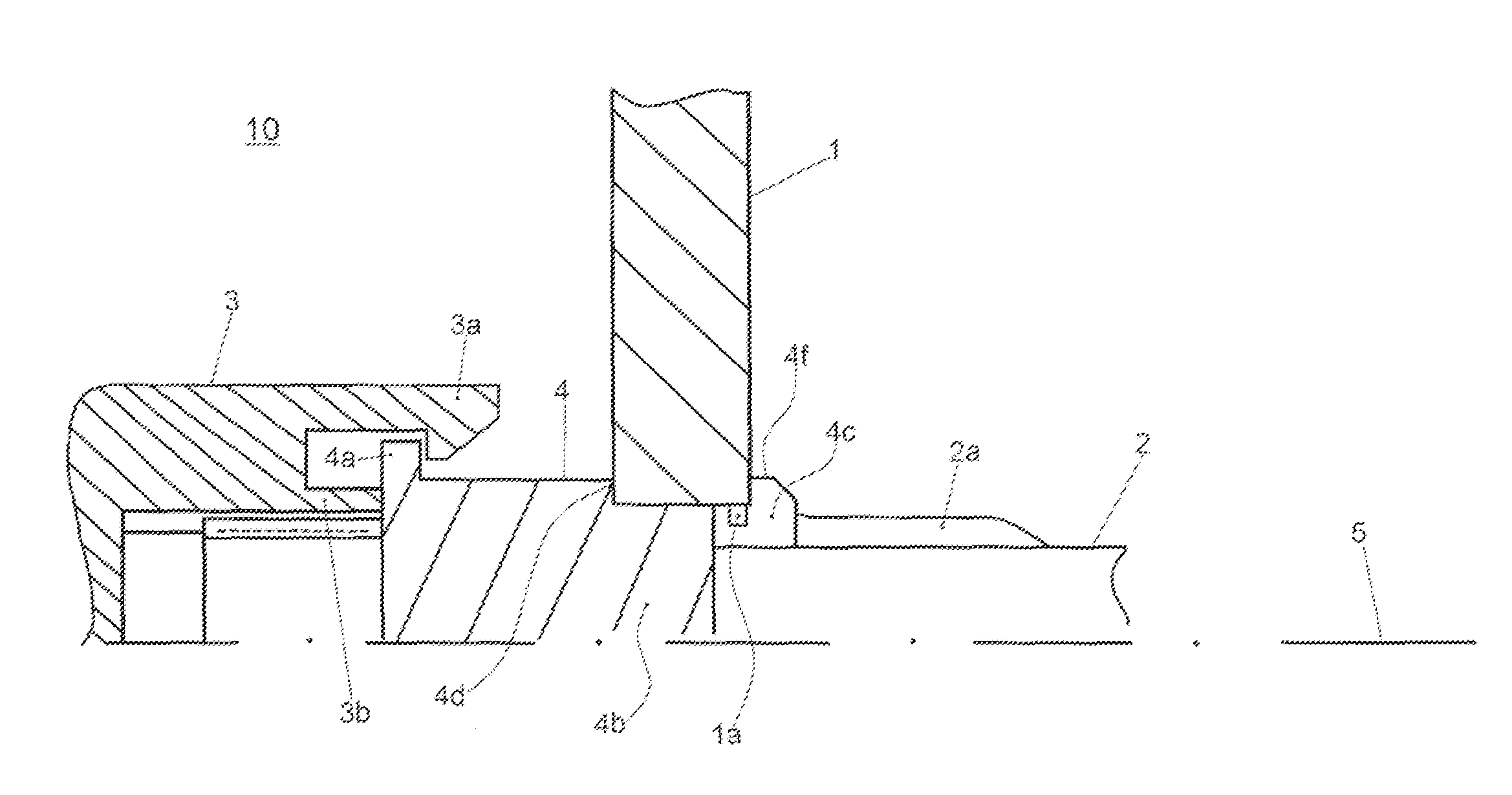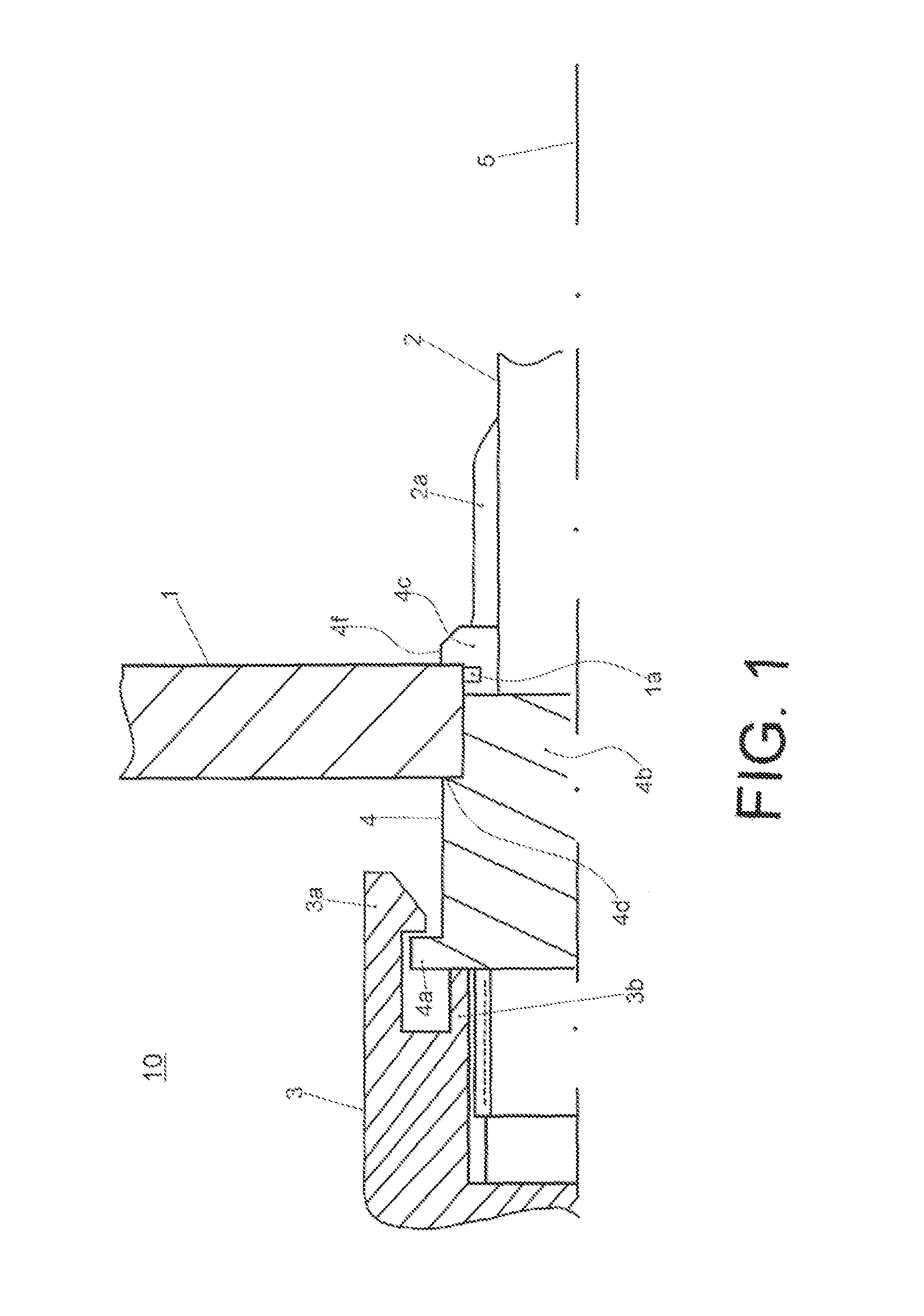Actuator device for the seat adjustment in a motor vehicle
a technology for actuating devices and motor vehicles, which is applied in the direction of movable seats, seating furniture, applications, etc., can solve the problems of the relative position tolerance of the two ratchet fittings towards each other, and the assembly of the actuator device is more complex, so as to achieve high production tolerances and simplify the assembly. cost-effective
- Summary
- Abstract
- Description
- Claims
- Application Information
AI Technical Summary
Benefits of technology
Problems solved by technology
Method used
Image
Examples
Embodiment Construction
[0021]The invention features an actuator device 10, FIG. 1, for the seat adjustment in a motor vehicle. The actuator device includes at least one ratchet. fitting 1, a transmission element 2 and an actuator element 3, whereby the transmission element 2 is centered in the ratchet fitting 1 with a centering element 4 such that the centering element 4 allows for a limited torsional backlash between the transmission element 2 and the ratchet fitting 1 and creates a restoring force against the rotation. Typically, the ratchet fitting 1 is designed such that it exhibits a central borehole for receiving an actuator mechanism that is suited for receiving the transmission element 2 with the release of the ratchet fitting 1 occurring through a rotation of the transmission element 2. Typically a driver la is provided at the ratchet fitting 1, for example designed in the shape of a cam that interacts with a suitable contour of the transmission element 2. According to the invention, the transmis...
PUM
 Login to View More
Login to View More Abstract
Description
Claims
Application Information
 Login to View More
Login to View More - R&D
- Intellectual Property
- Life Sciences
- Materials
- Tech Scout
- Unparalleled Data Quality
- Higher Quality Content
- 60% Fewer Hallucinations
Browse by: Latest US Patents, China's latest patents, Technical Efficacy Thesaurus, Application Domain, Technology Topic, Popular Technical Reports.
© 2025 PatSnap. All rights reserved.Legal|Privacy policy|Modern Slavery Act Transparency Statement|Sitemap|About US| Contact US: help@patsnap.com



